Ever wondered if capybaras have tails? You’re not alone. These lovable, oversized guinea pigs have captured hearts worldwide, but their rear ends remain a mystery to many. Let’s dive into the fascinating world of capybara anatomy and uncover the truth about their tails.
The Short Answer: Yes, But Not Really
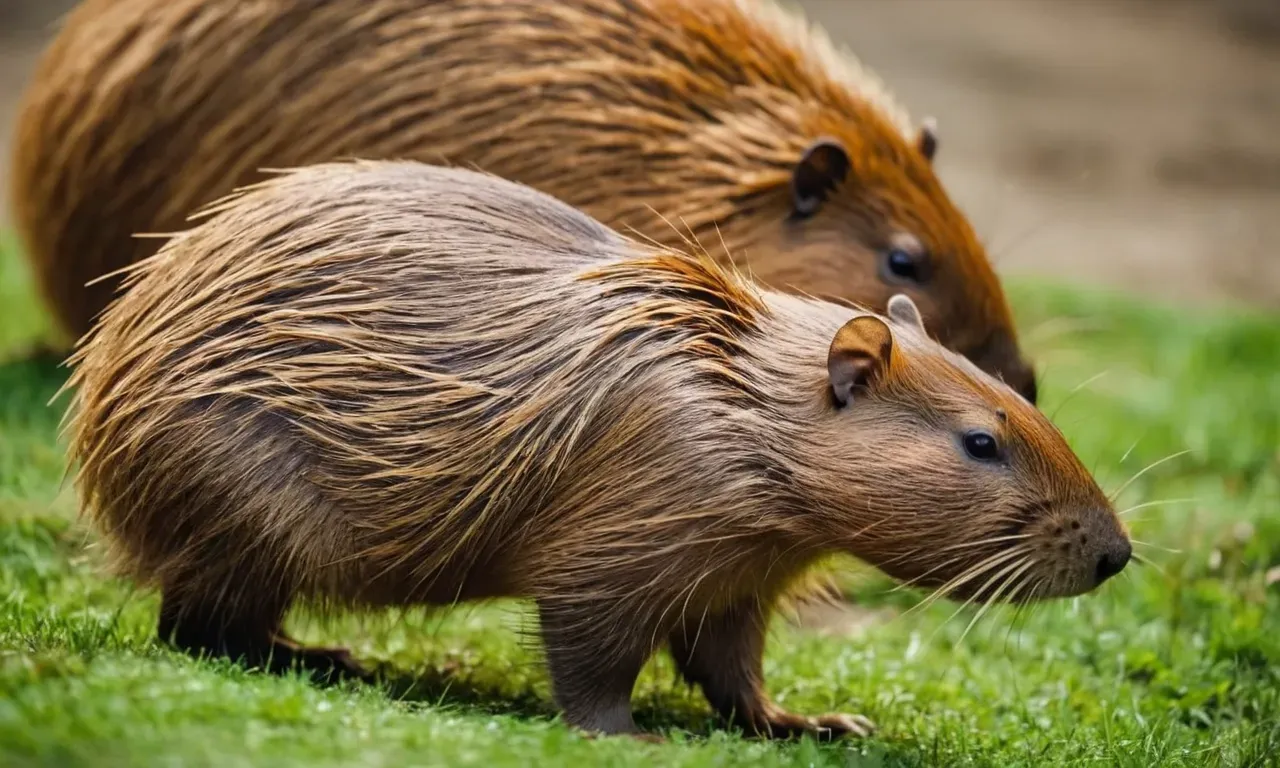
Capybaras do have tails, but they’re not what you’d expect. These giant rodents possess what’s called a vestigial tail – a tiny, almost invisible stub that serves no significant purpose. It’s like nature’s way of saying, “We tried, but decided tails weren’t really their thing.”
Capybara Anatomy 101: More Than Just a Cute Face
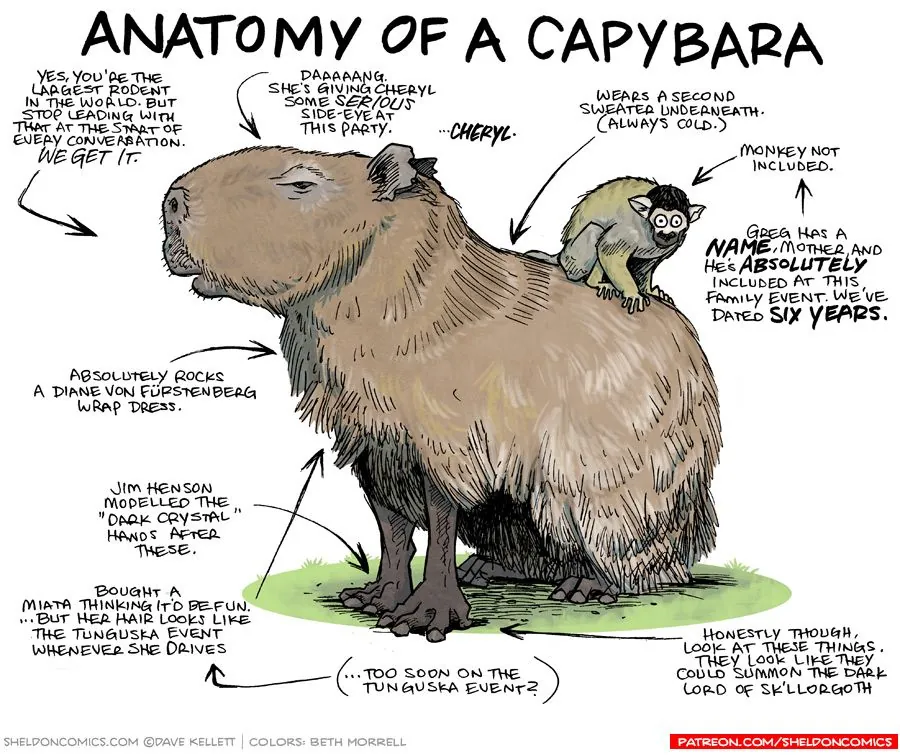
Before we dive deeper into the tail situation, let’s break down the capybara’s unique body structure:
- Size: These chunky boys are the world’s largest rodents, weighing up to 66 kg (146 lbs) and measuring 1.2 meters (4 feet) long.
- Body Shape: Picture a barrel with legs, and you’re not far off. Their sturdy, round bodies are perfect for their semi-aquatic lifestyle.
- Legs: Short but powerful, with webbed toes for swimming.
- Head: Small in proportion to their body, with eyes, ears, and nostrils positioned high up – ideal for peeking above water.
- Fur: Coarse and thin, ranging from reddish-brown to gray.
The Tale of the Missing Tail

So, why don’t capybaras have proper tails? It’s all about evolution, baby. Here’s the scoop:
- Aquatic Adaptation: Capybaras are semi-aquatic creatures. A long tail would just slow them down in the water.
- Heat Regulation: Living in warm climates, they don’t need a furry tail to keep warm.
- Predator Evasion: No tail means one less thing for predators to grab onto.
The Vestigial Tail: Nature’s Leftover
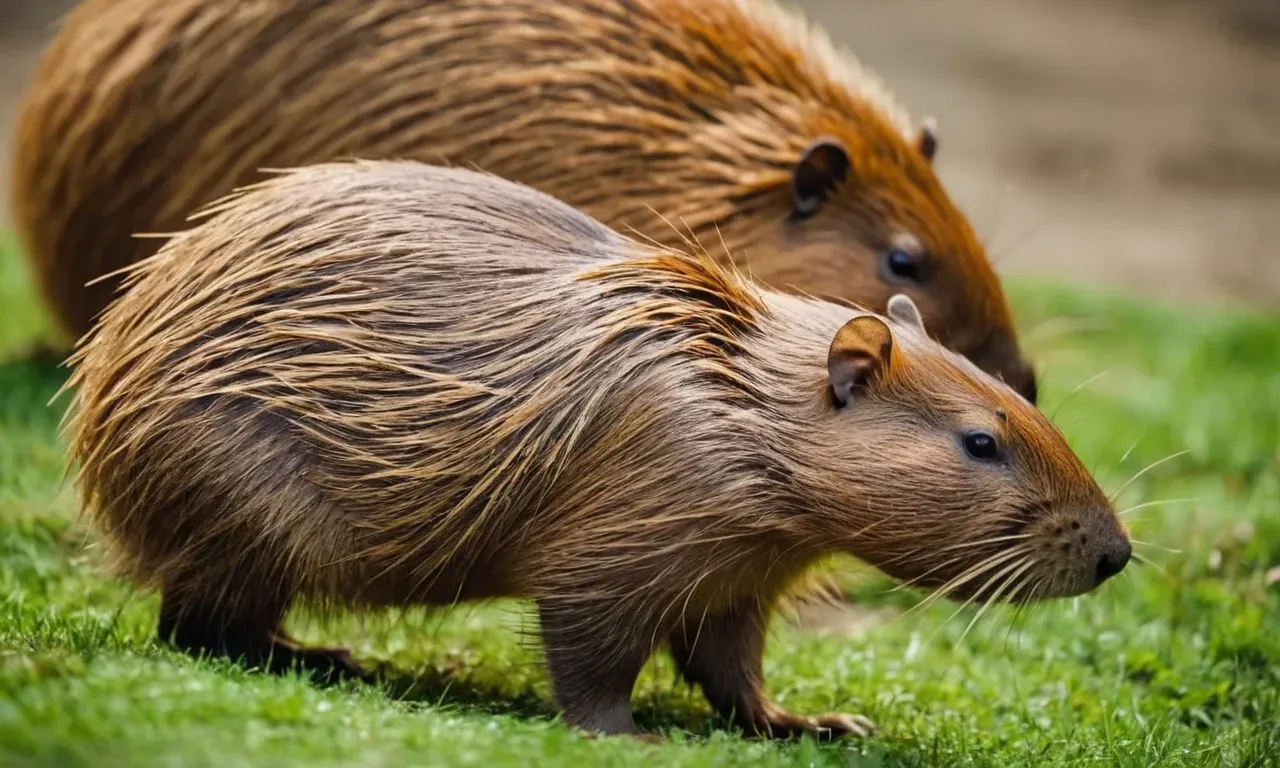
That tiny stub on a capybara’s backside is called a vestigial tail. But what exactly does that mean?
- Definition: A vestigial structure is a body part that has lost its original function through evolution.
- Origin: Capybaras’ rodent ancestors likely had full-sized tails for balance and communication.
- Current State: The vestigial tail is now just a small, hard knob, often hidden by fur.
Capybara Relatives: A Tail of Two Rodents
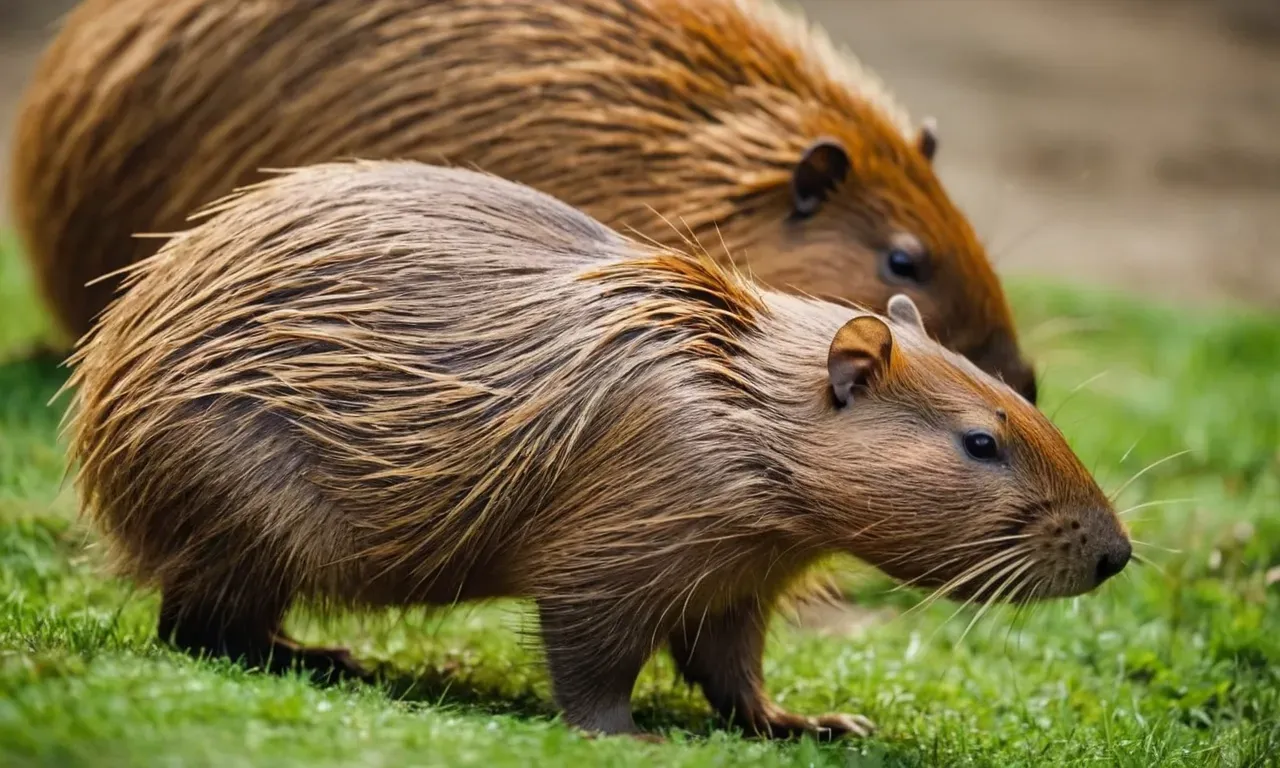
Let’s compare capybaras to their rodent cousins:
- Guinea Pigs: Close relatives with similarly stubby tails.
- Beavers: Distant cousins with large, flat tails used for swimming and slapping water.
- Rats: Far relatives with long, scaly tails for balance.
The Capybara Lifestyle: Who Needs a Tail Anyway?
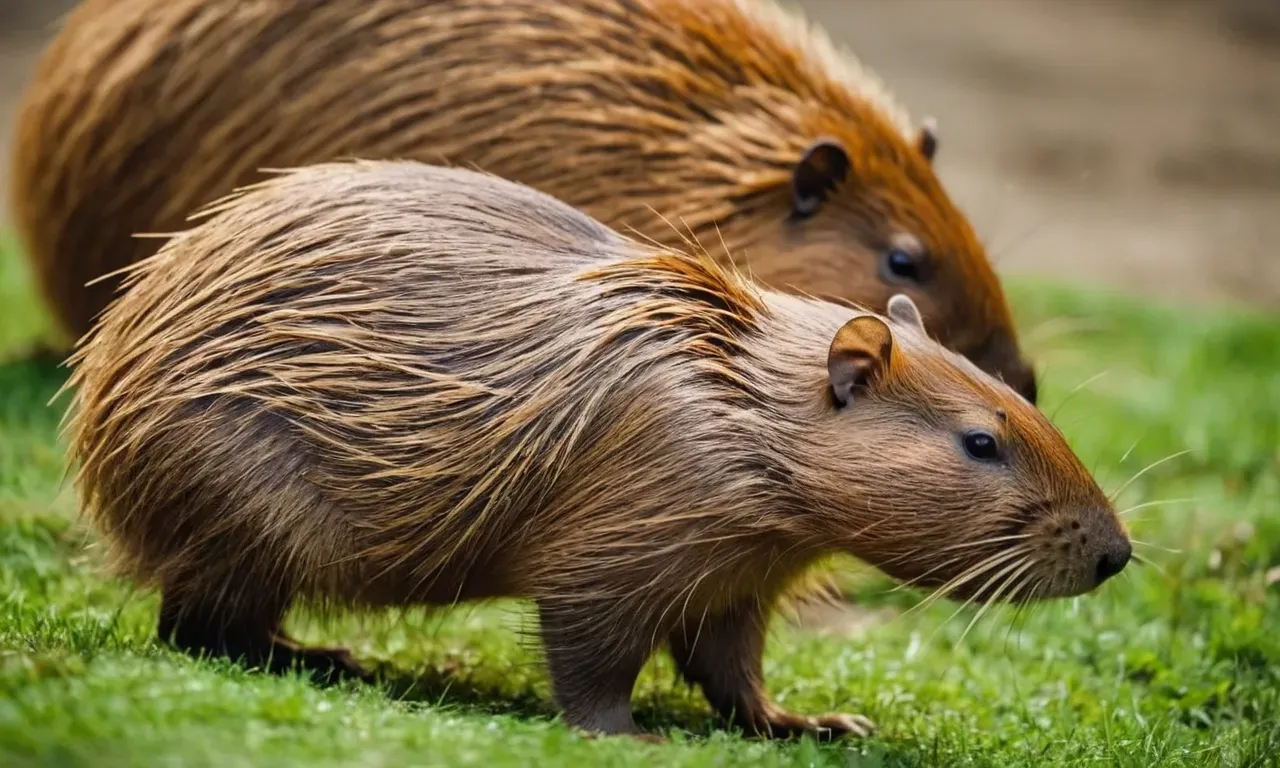
Capybaras have adapted perfectly to life without a proper tail. Here’s how they rock their tailless existence:
- Swimming Champs: Their barrel-shaped bodies and webbed feet make them excellent swimmers, no tail required.
- Social Butterflies: They communicate through vocalizations and body language, not tail wagging.
- Grazing Experts: Their sturdy build and strong legs are perfect for munching on grass and aquatic plants.
FAQs: Everything You’ve Ever Wanted to Know About Capybara Tails (But Were Afraid to Ask)
Q: Can you see a capybara’s tail?
A: Barely. It’s so small it’s often hidden by fur.
Q: Do baby capybaras have tails?
A: They’re born with the same tiny vestigial tail as adults.
Q: Does the lack of a tail affect capybaras in any way?
A: Nope! They’ve adapted perfectly to their tailless lifestyle.
Q: Are there any capybara species with longer tails?
A: Not among living species. All modern capybaras have vestigial tails.
Fun Capybara Facts: Because Who Doesn’t Love Trivia?
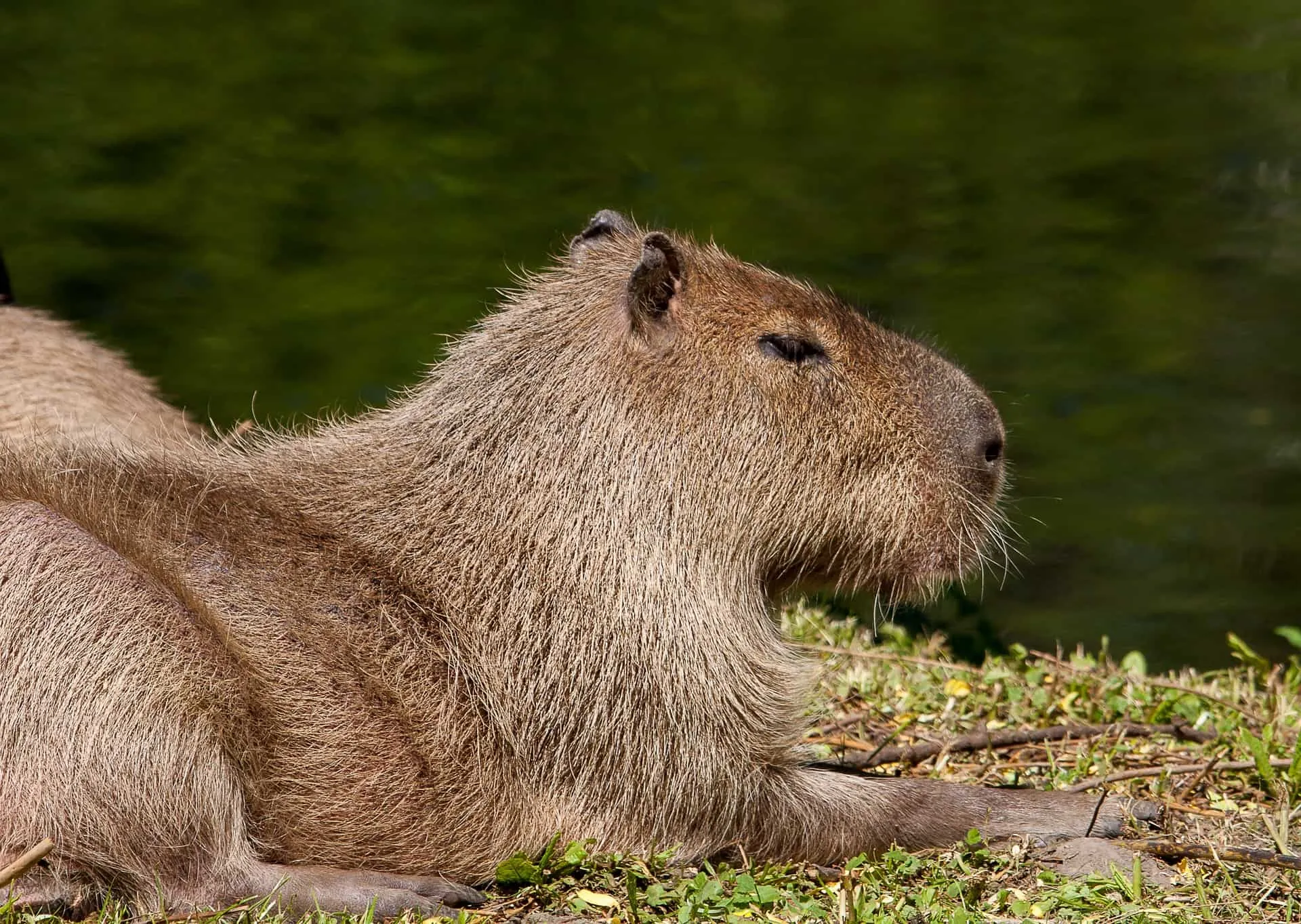
- Capybaras can hold their breath underwater for up to 5 minutes.
- They’re excellent swimmers and can even sleep in water, keeping just their noses above the surface.
- Capybaras are social animals, often found in groups of 10-20 individuals.
- Their teeth never stop growing, just like other rodents.
- Capybaras are considered a delicacy in some South American countries (but let’s not dwell on that).
The Bottom Line: Tailless Wonders
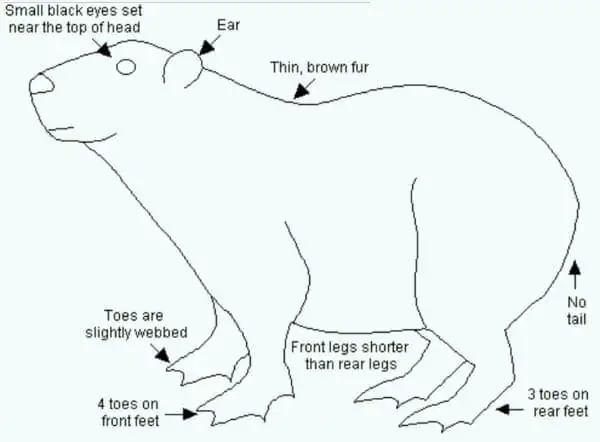
So, do capybaras have tails? Technically yes, but practically no. These adorable, oversized rodents have evolved to thrive without the need for a long, swishy tail. Their vestigial tail is just a reminder of their evolutionary past, like that weird app on your phone you never use but can’t delete.
Next time you see a capybara, take a moment to appreciate their unique, tailless design. It’s just one more reason to love these charming, chunky creatures.
Remember, in the world of capybaras, it’s not about the tail you have, but the friends you make along the way. And with their social nature and irresistible charm, capybaras are winning at life, tail or no tail.
